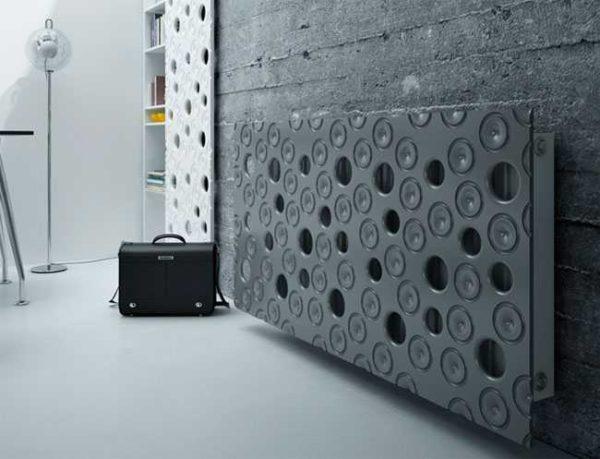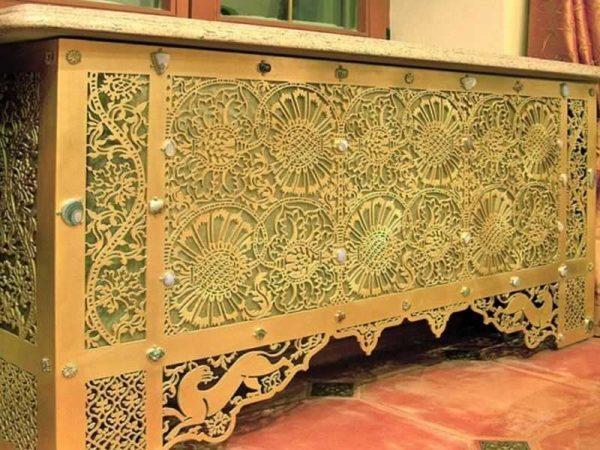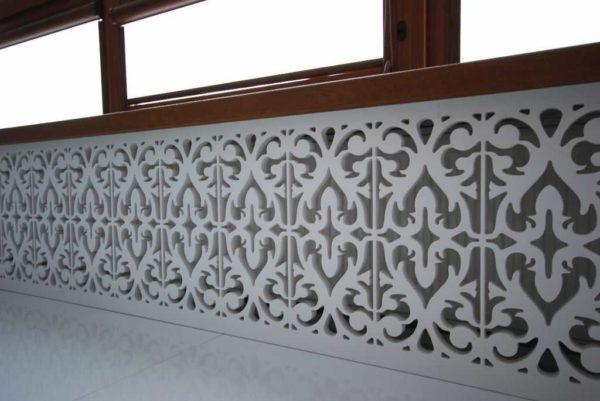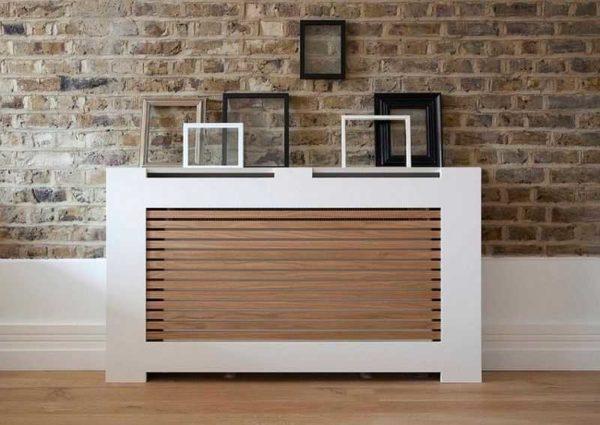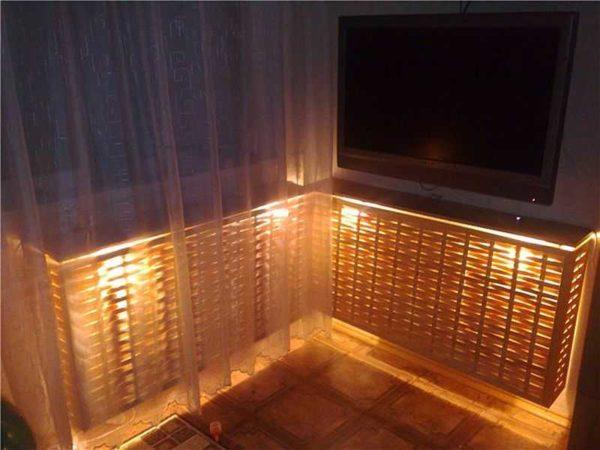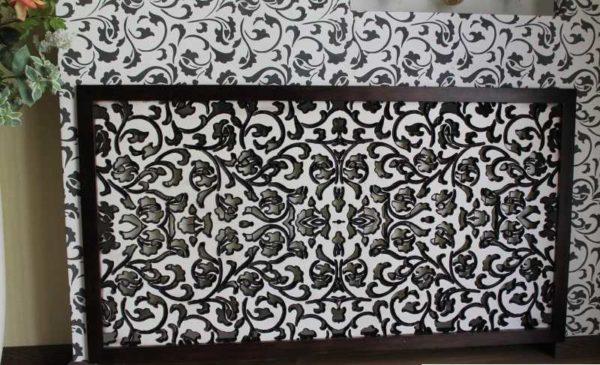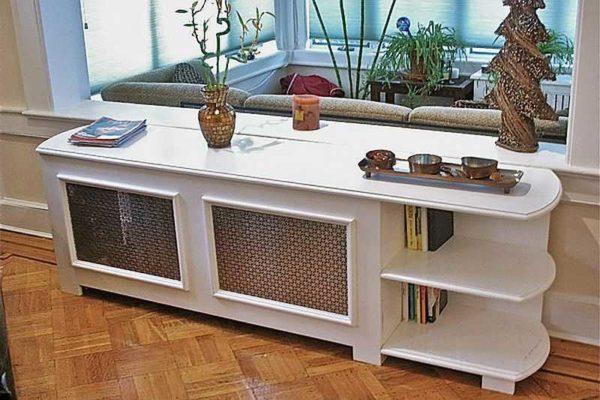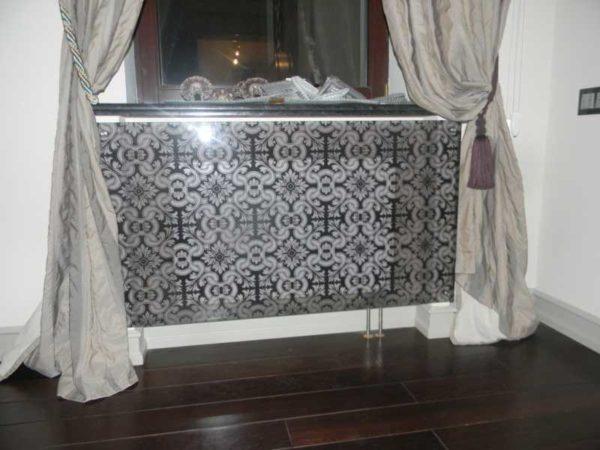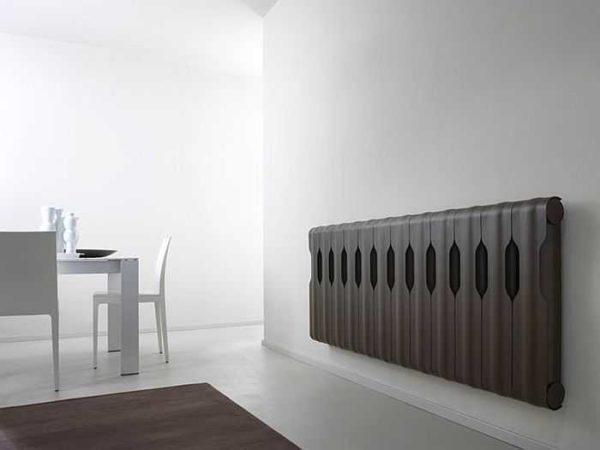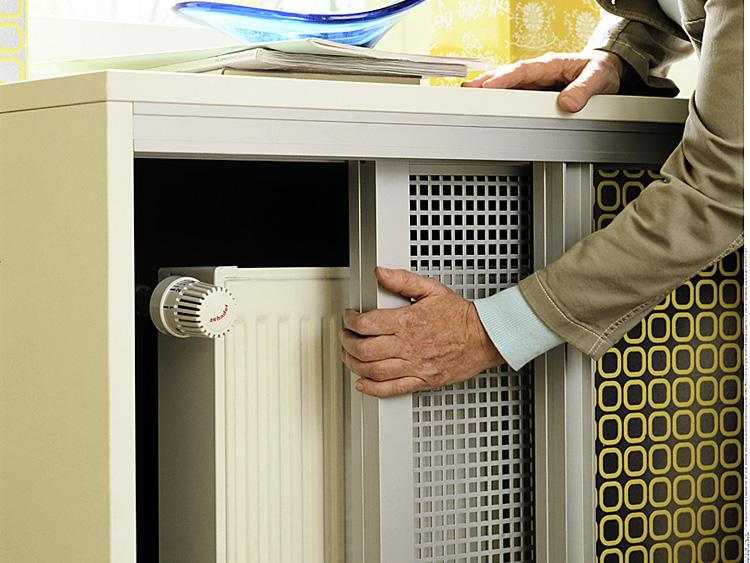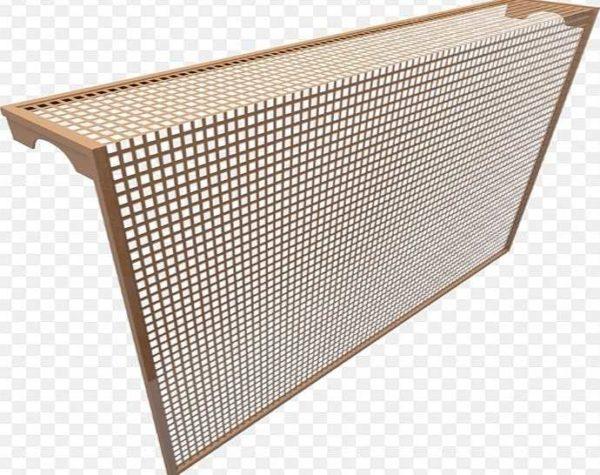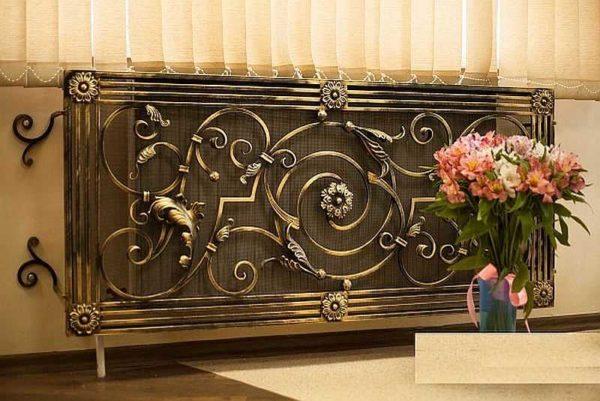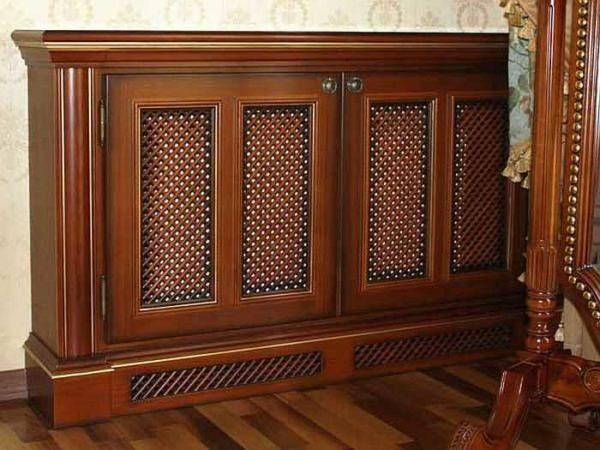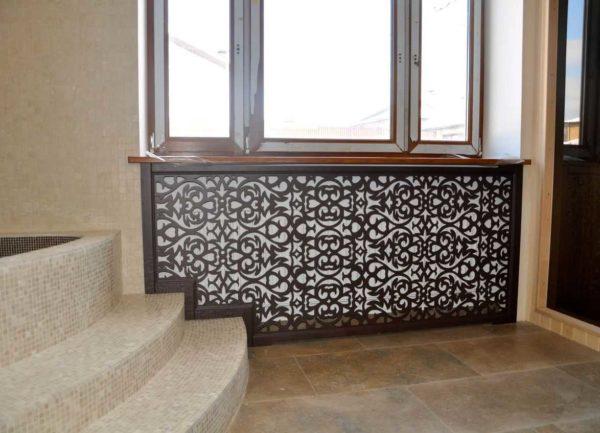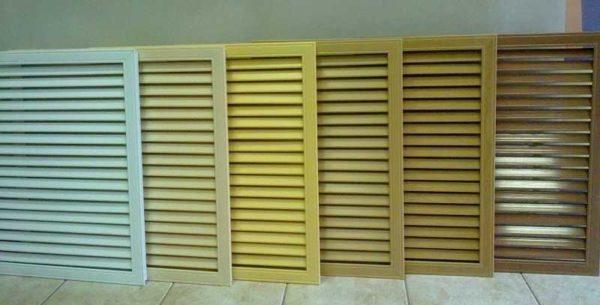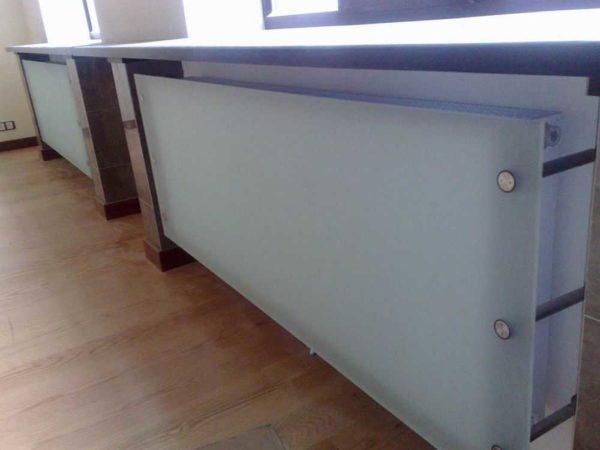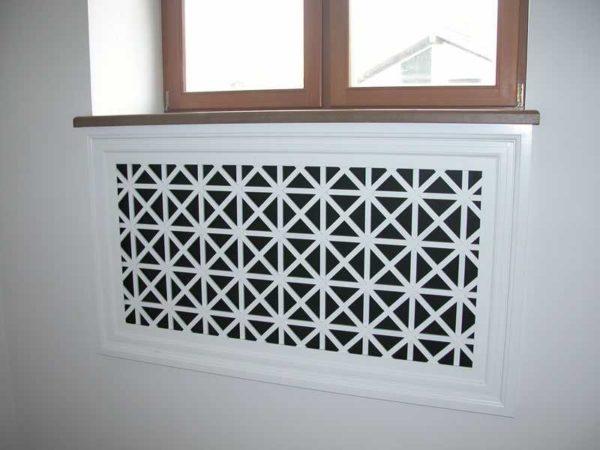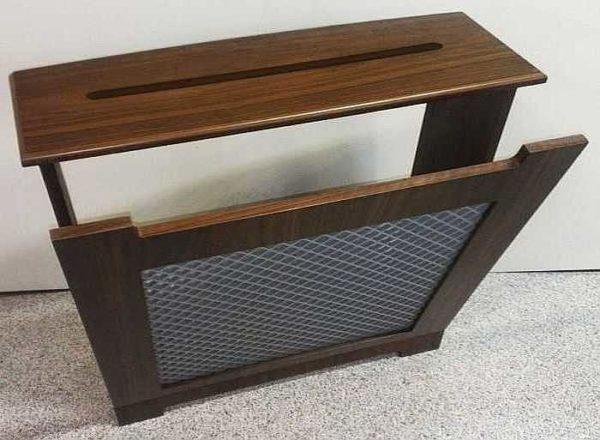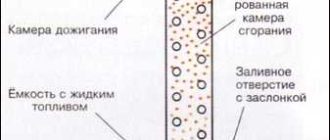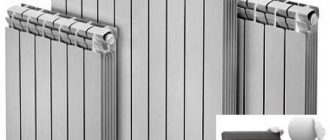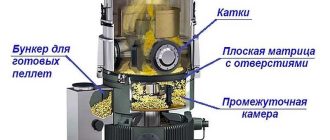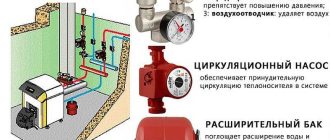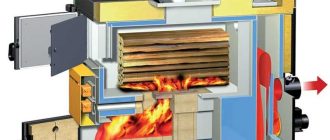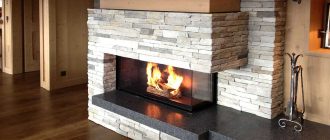Batteries are not always pleasing in appearance. Some models cause a burning desire to hide them. One of the options for solving the problem – grilles on the radiators. There are a lot of options, for a different purse, in different types and styles.
記事の内容
A little about heat engineering and grilles on the radiators
Even if you need grilles on radiators for decoration, you should not forget that the batteries should heat the room. Any screen reduces the heat output, even the most openwork and thin. Another question is that one will reduce the amount of heat transmitted by 10-15%, and the other – by 60% or even more. It is unlikely that you will want to sit in a beautiful but cold room, so when choosing a decorative grille, you should also take into account how the heat will spread.
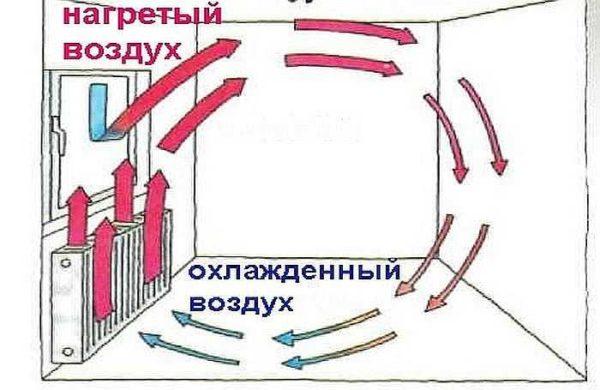
The principle of heat transfer from a radiator without a grille is shown in the figure. The basic idea is that the air should come in from below, pass along the radiator, heat up and go up. This is how our heating works. When choosing a grille or screen, you should keep this in mind. For proper air circulation, there needs to be a gap at the bottom and no cover at the top. At the very least, the lid should have a large perforation area.
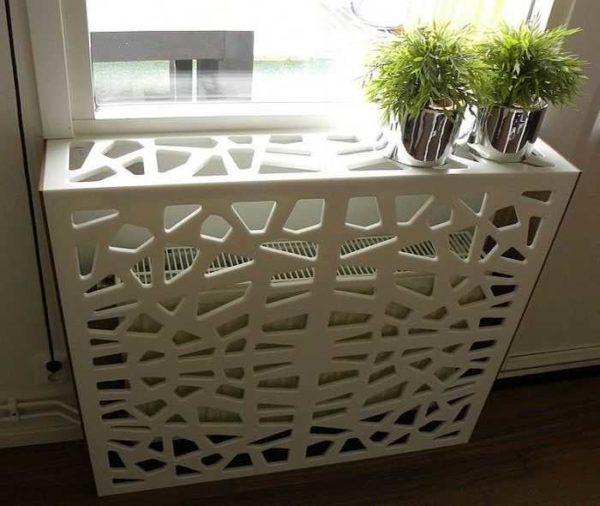
But if you look at many of the decorative grilles, you can immediately say that the room will be cold. Especially this suffers from grilles on heating radiators in the form of a box, which have walls on all sides. If they are very openwork, as in the photo above, there is not much trouble, but if they are made of solid wood (as in the photo below), almost without perforation or with minimal holes, be prepared for inefficient heating.
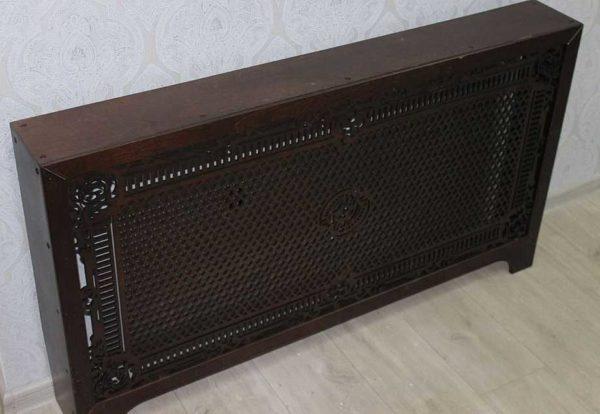
Wood is certainly an aesthetically pleasing material, but it has a high heat capacity. Until the wood is heated, the room will be cold. And since the solid wood is above the radiator and there are no holes for circulation, the radiator under such a grille will be hot, but the room will be cold.
Objectives and materials
Most often, grilles on heating radiators are installed for decoration – not all radiators look attractive, and grilles make, sometimes, very beautiful. The second task, which is often performed by screens on the radiators, is to cover sharp and hard edges. This is relevant, in families with children, especially if there are cast iron radiators of the old model, type “accordion”. The shape of them tavmozasnaya, and the look is unattractive, to the place they will be except in rooms in the loft style.
Do grids on radiators of heating from different materials:
- Metal screens on the radiators are mass produced. They are made of thin sheet steel, which is then covered with paint. For the most part, they cost a little, but their appearance is average. Duration of operation depends on the quality of coloring. Preferably – powder enamels. They last longer, maintaining attractiveness for decades. From the point of view of the effect on heating, metal screens on radiators are the best choice. Metal heats up quickly, and then begins to radiate heat itself. So the option is inexpensive (usually) and not greatly affecting the temperature in the room (if perforated).
- Forged grilles are very beautiful. But forging is too openwork, so some kind of background is required, and often it is made contrasting, in order to brighten up the forged elements. To ensure proper air circulation, it makes sense to make the “background” of a perforated metal sheet.
- Wooden grilles and screens. Wood has always been and remains a premium material. The high plasticity of the material allows you to make them in different styles and shapes. And although there are inexpensive products made of wood, they look very good. But, as it was said above, to work closed on all sides of the wood radiator, transmits little heat into the room.
- MDF and HDF. Laminated sheet materials are used for manufacturing. It is worth mentioning that no binders are used in the production of MDF and CFD. Softened wood fibers are pressed, and in the process lignin – a natural binder contained in wood – is released. The lignin is what glues the fibers together. So both of these materials are completely safe. If we know MDF products more or less well, then HDF is an unfamiliar material for many people. It differs from MDF only in terms of pressing conditions. It is molded under higher pressure, as a result it is quite thin (3-4 mm), but more dense and homogeneous. MDF holds its shape well, that is why openwork grilles on heating radiators are often made of MDF. From the point of view of the effect on heating, they are slightly better than wood – the layer is thinner, perforations are usually more.
- Plastic. Products made of plastic are most often used in bathrooms and toilets. This material is the most hygienic, it can be washed an unlimited number of times. Heat-resistant plastic is used for manufacturing, which is not afraid of heating up to 60-80°C. If the slats of the grille are installed at an incline, as shown in the photo, the heating will work efficiently. Through the gaps, the air enters unobstructed. Everything depends on how the cover is made.
- Glass screens on radiators appeared a few years ago. They are not ideal in terms of heating, but they have an attractive appearance. They are made of special tempered glass, matting or drawing.
Used in the manufacture of decorative grilles on radiators and more exotic materials. For example, bamboo and rattan. Such products are more demanding to interiors and are not often found.
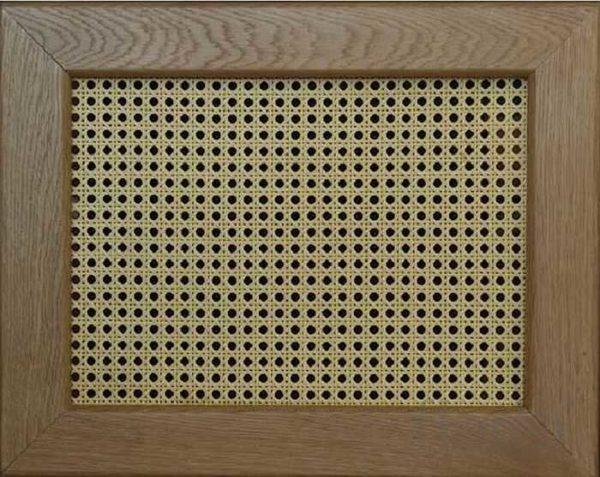
There are also combined grids. Most often there is a wooden frame, on which some kind of decorative grid is stretched. Bamboo and rattan wicker is most often on such a frame and attached. On the wooden frame are usually mounted and panels made of MDF and HDF.
Types and shapes
In addition to different materials, grilles on heating radiators come in different designs. All this together creates a huge number of options.
- Flat screens. Most often used if the radiator is installed in a niche. In this case, the flat panel is attached to the bars fixed around the perimeter of the niche. In addition, glass screens for radiators also have this form, but are attached to special pins embedded in the wall. This type of decorative grids for radiators are also called “facades”.
- Hanging screens. There are two types:
- Lattice-box. From the point of view of heating – not the best option, as air circulation is difficult. They are used if it is necessary to close the sides of the radiator. These grids can be made in the form of a piece of furniture, most often – a chest of drawers or a cupboard. If they can stand on their own, without support (as in the photo below), they are also called attachable. There are also boxes that require fixation on the wall – they have no legs. For better heat dissipation under the lid and above the floor in the lattice-corob make a slit width of 3-5 cm. It is not a bad idea to make a hole in the top lid.
These are only the main types of screens and grids that cover heating radiators. Fantasy is boundless, there are very interesting models, but they are most often made by craftsmen with their own hands.
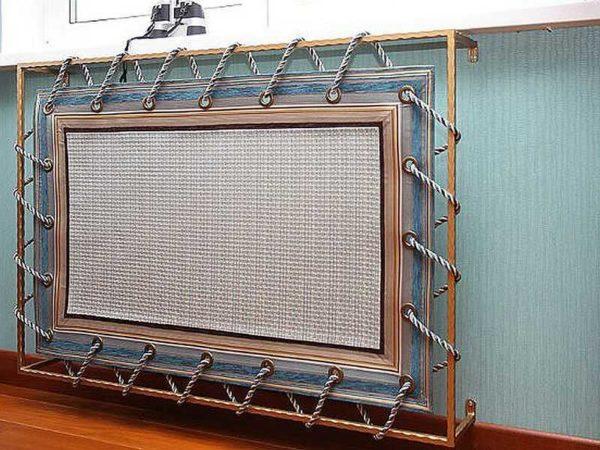
Often an important role in choosing a screen for the radiator is played by the price. The price range in this segment is more than significant – from 230 rubles for a metal hinged screen, up to 8000 rubles for a glass one. Some prices are shown in the table.
| Material of the grille on the radiator | Type of grille on the radiator | Dimensions (height*width*depth) | Cost | カラー |
|---|---|---|---|---|
| Sheet metal, thickness 0,7-0,8 mm | Hanging screen on cast iron radiator | 27 cm * 29 cm * 15 cm | 230ルーブル | White |
| Sheet metal, thickness 0,7-0,8 mm | Hanging screen for steel radiator | 44 cm * 39 cm * 15 cm | 250ルーブル | White |
| Sheet metal, thickness 0,7-0,8 mm | Hanging screen for cast iron radiator | 61 cm * 49 cm * 15 cm | 280ルーブル | White |
| Sheet metal, thickness 0,7-0,8 mm | Hanging screen for steel radiator | 53 cm * 49 cm * 10 cm | 350 rubles | Beige |
| MDF | Facade (flat screen) | from 1500 rubles | 7 shades of lamination | |
| MDF | Box | from 2300 rubles | 7 shades of lamination | |
| ガラス | Screen | from 8000 rubles | matt, without pattern | |
| Powder coated metal | Hinged with one side | 60 cm * 40 cm * 15 cm | 1790 rubles | custom colors |
| Powder coated metal | Hinged with one sidewall | 70 cm * 60 cm * 15 cm | 2050 rubles | custom colors |
| Powder coated metal | Hinged with two walls | 60 cm * 40 cm * 15 cm | 2340 rubles | custom colors |
| Powder coated metal | Hanging with two walls | 70 cm * 60 cm * 15 cm | 2600 rubles | custom colors |
| Natural wood | Attached | from 6200 rubles |
Mounting peculiarities
Grids on radiators should be mounted in such a way that it is easy and quick to get access to heating devices and pipes. Periodically, at least twice a year, the elements of the heating system must be cleaned of dirt and dust, so access is necessary. In addition, emergency situations occur from time to time. In this case, a quick reaction is required and there is no time to unscrew the fasteners. Therefore, try to come up with a mounting system that allows you to remove the screen in one motion.
Attached and hinged
Hinged or attachable screens are the easiest. They can be removed/removed in seconds. But flat screens that cover radiators in niches and box screens that are fixed to the wall are the most problematic. But even here everything can be solved simply. To fix the box to the wall you can use two strips: one on the box, the second – on the wall. The secret is that the strips have a beveled upper edge (you can see in the picture). The one that is nailed on the wall has a slope to the wall, which is on the box – the bevel has a bevel in the direction of the grid. When the box is put in place, you get something like a lock.
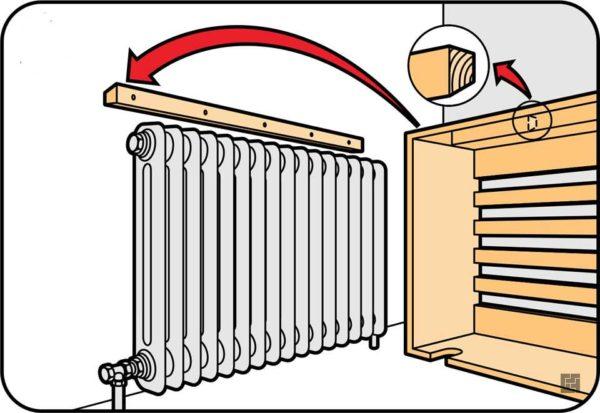
Another option – on one of the slats to fix metal plates, on the other – magnets. Or to the wall to attach not a wooden slat, but a metal corner, for example.
In the case of flat screens, the solution can be the same – metal plates and magnets. Another option is hooks and loops. It is simply realized, but not very convenient in operation: while you get into the hinges, you have to struggle. There is another difficult to install, but convenient way: to make a screen like sliding doors.
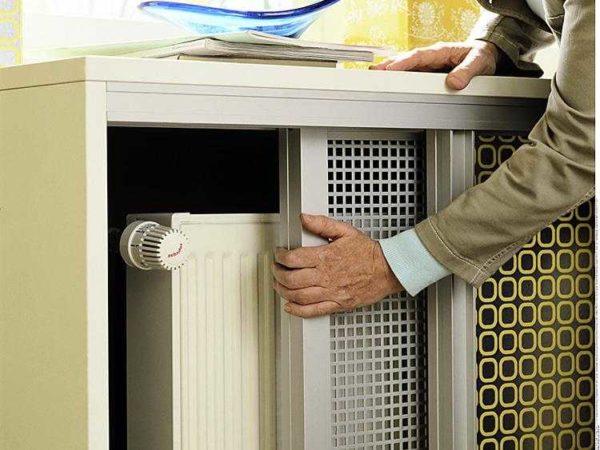
You can take the guides that are sold for furniture doors, install them, insert the screens into the appropriate grooves. If you do not plan to actively use the niche near the battery, you can not put roller mechanisms, but it will be difficult to push back. This method, by the way, can also be applied to the grille-column. It can then be nailed to the wall “intentionally”, and make the front wall movable.
Interesting options for the design of screens for batteries: photo ideas
In addition to the technical side of the issue is no less important aesthetic. There are options for grids and screens that are more of a design element, not a technical detail. Some of them are in the photo.
